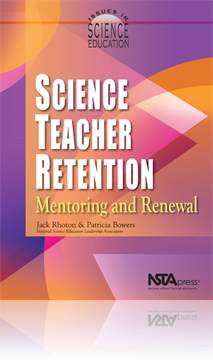All Resources
Book Chapter
ASIST: An Induction Program for Science Teachers
Quality induction programs are needed for science teachers. This chapter describes one program—Alternative Support for Induction Science Teachers (ASIST)—developed specifically for beginning science teachers based upon their expressed and demonst...
Book Chapter
Honoring Adult Learners: Adult Learning Theories and Implications for Professional Development
Designers of adult learning must consider carefully the research on adult learning and change and factor this into learning designs. In this chapter, the author reviews a classic adult learning model and two contemporary theories—constructivism and...
Book Chapter
The Model Science Laboratory Project: Lessons Learned about Teacher Retention
This chapter presents the Model Science Laboratory Project in the Rice University/Houston Independent School District. The project provided support, training, and time for teachers to refine their instruction of science to urban students in the Houst...
Book Chapter
Beginning Teacher Mentoring Programs: The Principal's Role
Successful teacher mentoring programs require strong leadership. School principals must be prepared to provide this leadership by planning, organizing, implementing, and evaluating a mentoring program that is based on research and best practice. This...
Book Chapter
New science teachers may be retained using a multifaceted approach. First, school districts may use an on-site training program to induct new science teachers. Second, schools may arrange the master schedule to support new teachers. Finally, veteran ...
Book Chapter
Mentoring for Professional Renewal: The Kentucky Experience
This chapter offers an overall perspective on the value of mentoring for new and experienced teachers. It also identifies characteristics of effective mentoring drawn from reports of existing programs, primarily from a statewide teacher induction pro...
Book Chapter
Recruitment and Retention of Secondary Teachers in New York State
The chapter examines how one urban school district in New York State recruits and retains secondary science teachers. The main finding is that the recruitment, retention, and renewal of science teachers is practiced differently at the district and sc...
Book Chapter
Comprehensive Teacher Induction in Five Countries: Implications for Supporting U.S. Science Teachers
This chapter presents a National Science Foundation-funded study of beginning science and mathematics teachers in five countries. The study looks at teacher induction systems that are more comprehensive than most in the United States. For example, th...
Book Chapter
A number of studies concerning the mentoring of beginning teachers and their induction process are found in recent educational publications. A review of this literature guides professional educators as they formulate and implement the work of educati...
Book Chapter
Induction Programs for Science Teachers: What the Research Says
Induction programs play a critical role in the development of professional educators. These programs support beginning teachers as their preservice ideology is challenged and as they experience constraints in working in a new school climate. While in...
Book Chapter
Needs Assessment for Beginning Teacher Assistance Programs
This chapter makes several general suggestions to teams charged with developing beginning teacher assistance programs (BTAPs), then describes four specific types of needs assessment carried out in effective BTPAs—environmental needs assessment, beg...
Book Chapter
A Systematic Approach to Support Teacher Retention and Renewal
Teacher retention and renewal are critical issues facing school districts across the United States, with the need for teacher retention at a time when school districts are also facing a need for teacher renewal. It is imperative that school districts...
Book Chapter
Mentoring and Coaching for Teachers of Science: Enhancing Professional Culture
Mentor programs provide an opportunity to foster a professional culture that focuses on improving the teaching, learning, and assessing of science as well as a means to retain highly qualified new and experienced teachers. This chapter outlines key s...
Book Chapter
Personal Histories Supporting Retention of Beginning Science Teachers
Beginning science teachers enter the classroom with an early professional role identity formed from life experiences in science, education, and volunteer/work settings. These experiences, along with teachers' values and beliefs, can support new scien...
Book Chapter
The Reemerging Cycle of Teacher Supply and Demand: North Carolina Takes Action
This chapter presents a brief history of teacher shortages, particularly in the fields of science and mathematics. It describes numerous efforts by North Carolina, not only in recruiting individuals into the teaching profession but also in retaining ...


